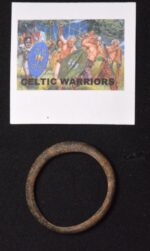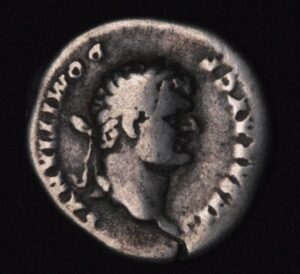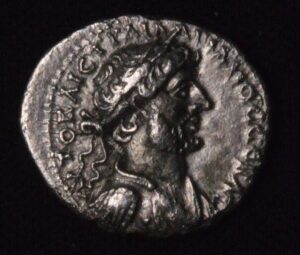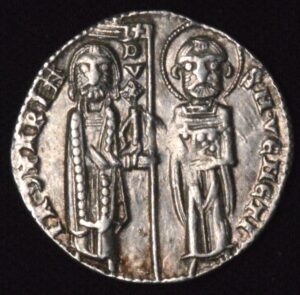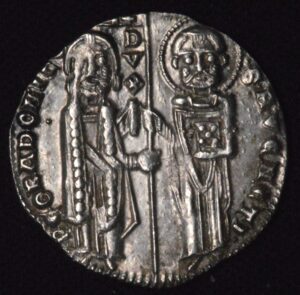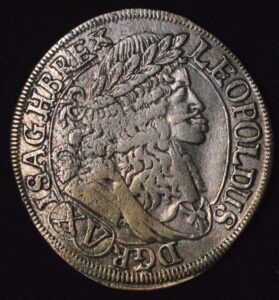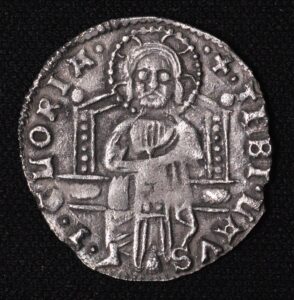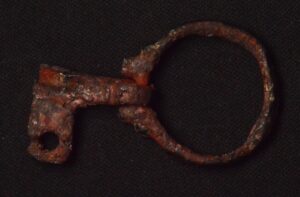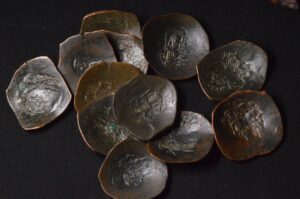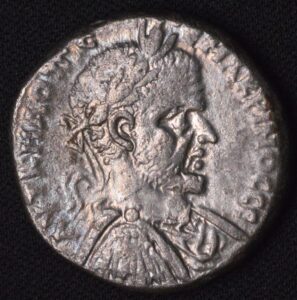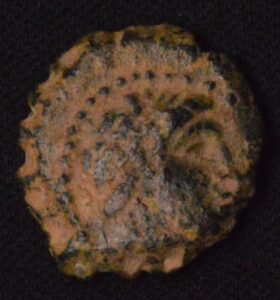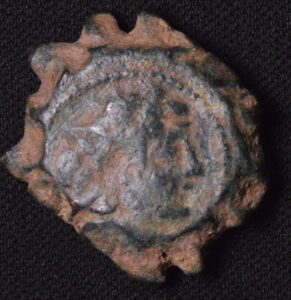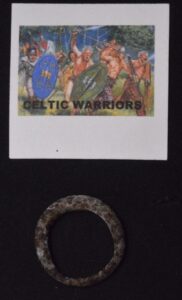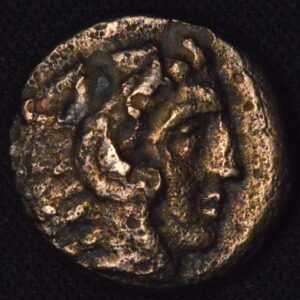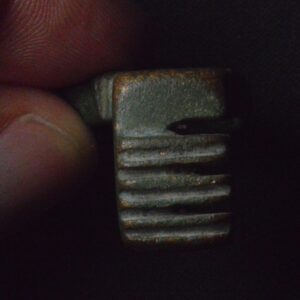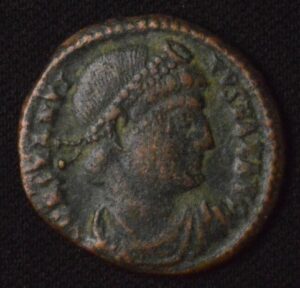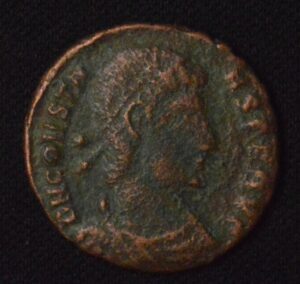Description
Ancient Celtic bronze rings from around 500 BC, especially those originating from the Danube region, are fascinating artifacts that serve as some of the earliest known forms of currency, often called “ring money” or proto-money. These sturdy bronze rings were hand-crafted by Celtic tribes and traded throughout Europe long before the widespread use of struck coinage. The rings typically measure between 0.75 to 1 inch in diameter and vary in weight, with many examples around 8 grams, reflecting a standardization ideal for trade and exchange within and beyond Celtic lands.
Scholars believe these rings served multiple purposes: they functioned as wearable objects such as garment or saddle fittings, personal adornments, and importantly, as units of exchange recognized by different tribes. The use of ring money is well-documented especially in the Danube basin, where Celtic presence was strong, but also extended into neighboring regions like France, Spain, Britain, and Ireland. These rings are considered one of the earliest types of metallic currency, embodying a transitional stage before the introduction of formal struck coins.
The Celtic people were skilled metalworkers, known for their intricate designs and durable bronze artifacts. Each ring was often slightly unique due to handcrafting, exhibiting natural aged patinas ranging from bright green to brown bronzed tones depending on their burial environment. Today, genuine Celtic bronze ring money pieces are highly sought after by collectors of ancient artifacts and Celtic history enthusiasts, prized for their rarity, historical significance, and tactile connection to Iron Age Europe.
Authentic examples coming from archaeological digs in the Danube region often show some wear, encrustation, or bending—testaments to their age and long use. Specialized dealers and conservation experts meticulously inspect and preserve these rings, occasionally offering them with certificates of authenticity that confirm provenance and dating to roughly between 800 BC and 50 BC. These artifacts provide invaluable insight into the Celtic tribes’ economy, craftsmanship, and cultural exchange.
In summary, an ancient Celtic bronze ring from the Danube region circa 500 BC is a rare and remarkable relic of early metallic currency. It bridges the worlds of adornment, trade, and craftsmanship, offering a tangible link to the social and economic life of ancient Celtic peoples. Collectors and historians value this type of ring both as a collectible and as a symbol of the rich cultural history of Europe’s Iron Age.
Ancient Celtic bronze rings from around 500 BC, especially those originating from the Danube region, are fascinating artifacts that serve as some of the earliest known forms of currency, often called “ring money” or proto-money. These sturdy bronze rings were hand-crafted by Celtic tribes and traded throughout Europe long before the widespread use of struck coinage. The rings typically measure between 0.75 to 1 inch in diameter and vary in weight, with many examples around 8 grams, reflecting a standardization ideal for trade and exchange within and beyond Celtic lands.
Scholars believe these rings served multiple purposes: they functioned as wearable objects such as garment or saddle fittings, personal adornments, and importantly, as units of exchange recognized by different tribes. The use of ring money is well-documented especially in the Danube basin, where Celtic presence was strong, but also extended into neighboring regions like France, Spain, Britain, and Ireland. These rings are considered one of the earliest types of metallic currency, embodying a transitional stage before the introduction of formal struck coins.
The Celtic people were skilled metalworkers, known for their intricate designs and durable bronze artifacts. Each ring was often slightly unique due to handcrafting, exhibiting natural aged patinas ranging from bright green to brown bronzed tones depending on their burial environment. Today, genuine Celtic bronze ring money pieces are highly sought after by collectors of ancient artifacts and Celtic history enthusiasts, prized for their rarity, historical significance, and tactile connection to Iron Age Europe.
Authentic examples coming from archaeological digs in the Danube region often show some wear, encrustation, or bending—testaments to their age and long use. Specialized dealers and conservation experts meticulously inspect and preserve these rings, occasionally offering them with certificates of authenticity that confirm provenance and dating to roughly between 800 BC and 50 BC. These artifacts provide invaluable insight into the Celtic tribes’ economy, craftsmanship, and cultural exchange.
In summary, an ancient Celtic bronze ring from the Danube region circa 500 BC is a rare and remarkable relic of early metallic currency. It bridges the worlds of adornment, trade, and craftsmanship, offering a tangible link to the social and economic life of ancient Celtic peoples. Collectors and historians value this type of ring both as a collectible and as a symbol of the rich cultural history of Europe’s Iron Age.
Ancient Celtic bronze rings from around 500 BC, especially those originating from the Danube region, are fascinating artifacts that serve as some of the earliest known forms of currency, often called “ring money” or proto-money. These sturdy bronze rings were hand-crafted by Celtic tribes and traded throughout Europe long before the widespread use of struck coinage. The rings typically measure between 0.75 to 1 inch in diameter and vary in weight, with many examples around 8 grams, reflecting a standardization ideal for trade and exchange within and beyond Celtic lands.
Scholars believe these rings served multiple purposes: they functioned as wearable objects such as garment or saddle fittings, personal adornments, and importantly, as units of exchange recognized by different tribes. The use of ring money is well-documented especially in the Danube basin, where Celtic presence was strong, but also extended into neighboring regions like France, Spain, Britain, and Ireland. These rings are considered one of the earliest types of metallic currency, embodying a transitional stage before the introduction of formal struck coins.
The Celtic people were skilled metalworkers, known for their intricate designs and durable bronze artifacts. Each ring was often slightly unique due to handcrafting, exhibiting natural aged patinas ranging from bright green to brown bronzed tones depending on their burial environment. Today, genuine Celtic bronze ring money pieces are highly sought after by collectors of ancient artifacts and Celtic history enthusiasts, prized for their rarity, historical significance, and tactile connection to Iron Age Europe.
Authentic examples coming from archaeological digs in the Danube region often show some wear, encrustation, or bending—testaments to their age and long use. Specialized dealers and conservation experts meticulously inspect and preserve these rings, occasionally offering them with certificates of authenticity that confirm provenance and dating to roughly between 800 BC and 50 BC. These artifacts provide invaluable insight into the Celtic tribes’ economy, craftsmanship, and cultural exchange.
In summary, an ancient Celtic bronze ring from the Danube region circa 500 BC is a rare and remarkable relic of early metallic currency. It bridges the worlds of adornment, trade, and craftsmanship, offering a tangible link to the social and economic life of ancient Celtic peoples. Collectors and historians value this type of ring both as a collectible and as a symbol of the rich cultural history of Europe’s Iron Age.
CUSTOMER FEEDBACK








Related Products & Newly Released!
-
$70.00
-
$70.00




SHIPPING POLICY
Your order is shipped from the United States with USPS tracking within one business day.
14 Day Return Policy
You can return your item back within
14 days of the purchase

Secure payments
Your payments are 100% secure and are processed through Square or PayPal on a protected security network.
SHIPPING POLICY
FREE International and Domestic (United States) shipping. Your order is shipped with USPS tracking 24 hours after you order.
14 Day Return Policy
You can return your item back within
14 days of the purchase

Secure payments
Your payments are 100% secure and are processed through Square or PayPal on a protected security network.
RESOURCES
support
Get Real Deals!
Sign up now to receive our articles for the latest insights and promotions!
RESOURCES
support
Get Fresh Articles!
Signup our newsletter to get update insight or promotions.




